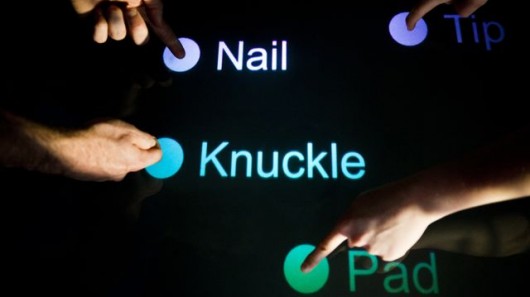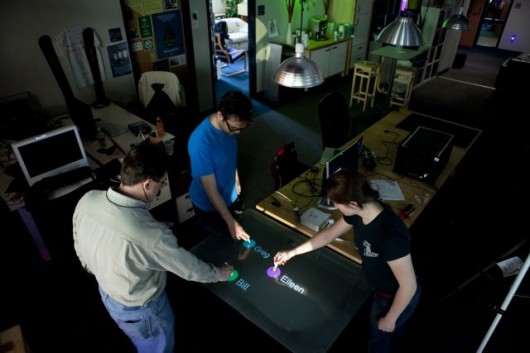Small touchscreen devices such smartphones certainly have their attractions, but they also have one drawback – there isn’t much room on their little screens for touch-sensitive features. This means that users will sometimes instead have to go into sub-menus, or make do with jabbing their fingers at tiny controls. Researchers at Carnegie Mellon University’s Human-Computer Interaction Institute, however, are working on an alternative. Their prototype TapSense system can differentiate between screen taps from different parts of the finger, and will perform different tasks accordingly.
TapSense works by analyzing the sound of objects hitting the glass of the touchscreen display. Using an inexpensive microphone attached to the device (the built-in mics don’t work), the system can tell the difference between taps delivered by a finger’s pad, nail, knuckle, or tip. It can also differentiate between taps from styluses made out of different types of inert materials, such as wood, acrylic and polystyrene foam.
An app running on a smartphone or other touchscreen device, equipped with TapSense, could perform different functions based on what part of the finger its operator used. This means that users could stay on one screen that had fairly large controls, changing modes or accessing features by alternating between various types of taps – not unlike using a right mouse button.

The researchers demonstrated one possible application of the technology, in which a knuckle tap on an email heading brought up a list of options, instead of opening the message. In another example, a paint app allowed users to draw freehand when using the pad of their finger, but inserted straight lines when they used their tip. In yet another, users could access alternate characters on a virtual keyboard app by typing with the tip of their finger (as opposed to the pad), and backspace by nail-tapping.

Because TapSense can tell the difference between styluses made from different materials, this means that multiple people could use the screen simultaneously and the device would be able to identify which user was which, based on what the point of their stylus was made of. Different functions could also be assigned to different materials, making possible a stylus with a “pen” on one end and an “eraser” on the other.
Source: gizmag
 Follow
Follow